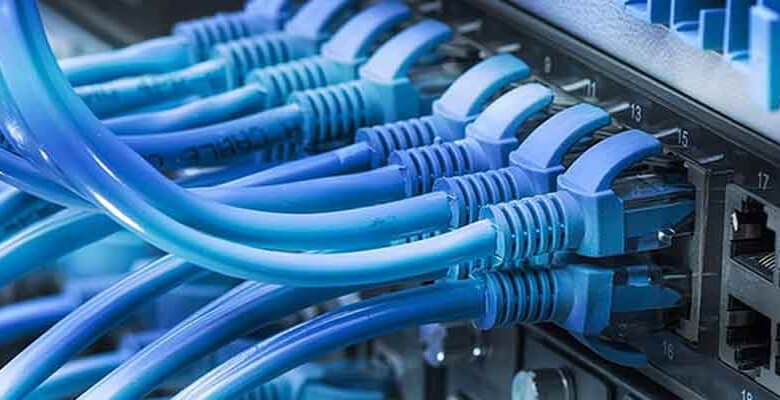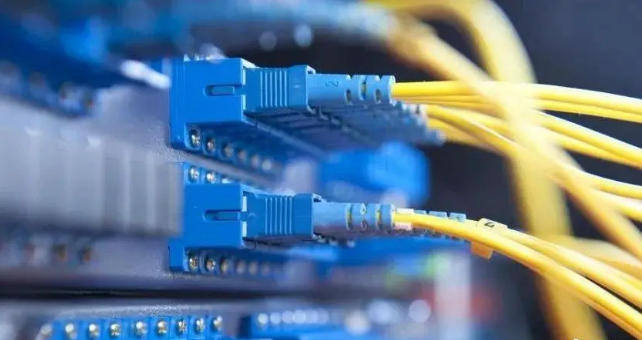Hello, everyone, welcome to Jiexi Kunlian Cable Co.,Ltd , in this article,we are going to discuss the difference between Fiber broadband and ordinary broadband.
Chapter 1: The difference between optical fiber dedicated line and ordinary broadband There are dedicated line access and broadband dial-up access commonly used to access the Internet, so what is the difference between dedicated line and ordinary broadband? Here’s an answer for everyone. Fiber Internet access (dedicated line access) and ordinary broadband Internet access (adsl) are two different Internet access methods. The biggest difference between the two is the difference in transmission media. Fiber Internet access (dedicated line access) Optical signal transmission, and ordinary broadband, that is, adsl Internet access completes the transmission of electrical signals, so the speed of optical fiber Internet access will be much faster than ordinary broadband Internet access.
1.Optical fiber Internet access (dedicated line access) has a fixed ip but ordinary broadband (adsl) does not have a fixed ip, which is what we usually call the public network ip. It is unique in the world, and it can be bound to the enterprise server as The unique identifier of the server that is accessed by the outside world. And with a fixed ip, our network will be more stable, and there is no need to drop the connection twice in three days like ordinary broadband (adsl)
2. Optical fiber Internet access (dedicated line access) is dual-channel, while ordinary broadband (adsl) is one-way. Usually, the process of surfing the Internet involves two aspects of broadband, the network uplink and the network downlink. If you use ordinary broadband (adsl) when uploading files, the download will also be affected. This is determined by the one-way nature of ordinary broadband (adsl). The advantage of fiber-optic Internet access (dedicated line access) is that you are uploading or downloading The other party will not be affected, even if the upload bandwidth is full and the download will not be affected.
Optical fiber Internet access (dedicated line access) has symmetrical uplink and downlink, while ordinary broadband (adsl) uplink is only 512k If it is 5m optical fiber Internet, ideally its uplink and downlink bandwidth can be full and reach 5m at the same time, while ordinary broadband (adsl) upload is only 512k Maximum bandwidth, and if the upload occupies the bandwidth, its downstream will also be affected, or even drag down the entire network.
4.The access levels of optical fiber Internet (dedicated line access) and ordinary broadband (adsl) are different. Different access levels in the network hierarchy determine the differences in nodes, speed and stability. 5. Optical fiber Internet access (dedicated line access) is an exclusive access method and ordinary broadband (adsl) is a shared access method This determines that ordinary broadband (adsl) will be affected by the peak period of Internet access and fiber Internet access will not. So, if companies or individuals have special requirements for the stability, security and speed of the website, they still have to choose a dedicated line for access.
Chapter 2: What is the main difference between optical fiber and broadband What is the main difference between optical fiber and broadband? Browsing times: 5342 times Reward points: 0 | Resolution time: 2009-9-5 13:48 | Questioner: 8227786 Best Fiber Internet access is the real broadband Internet access. The key to Internet access depends on the Internet connection method. At present, the main ones are: 1. ADSL broadband is used to use the existing telephone line at home, and then install an ADSL modem (also called a cat modem), the Internet speed is about 2Mb/s, which is currently the main Home internet access.
2. Community broadband: generally use optical fiber to connect to the community, and then connect to users through switches and network cables, so that everyone can share the Internet, as is the case with multiple computers in Internet cafes. The speed is optional, generally 10Mb/s, 100Mb/s, or even 1000M, etc. This is also the case in universities. Of course, the backbone of all networks uses optical fiber to transmit data.
2.Wireless Internet access: It is divided into two types: wireless LAN and true wireless Internet access. Wireless LAN: A wireless router is added to the above two Internet access methods. After setting up, you can use its wireless LAN network card to access the Internet, and it can only be effective within a range of tens of meters near the router (similar to PHS). The real wireless online is to use the existing mobile phone wireless network, such as the current 3G network, and the notebook opens the Internet service through the wireless Internet network card and the mobile phone card. The speed is around 3Mb/s. The download speed B/s, that is, bytes/second is 8 times of b/s (bits/second).
Chapter 3: The difference between optical fiber and ordinary network cable What is the difference between optical fiber and ordinary network cable? What is the difference between optical fiber and ordinary network cable? The network transmission medium in network hardware is usually called network cable. At present, the more common network cables are divided into thin coaxial cables, thick coaxial cables, twisted pairs and optical fibers.
Comparison of optical fiber and ordinary network cable: 1. Coaxial cable Coaxial cable is a type of transmission medium that many friends are familiar with. It is a cable with a central copper conductor wrapped in layers of insulated wires. Its biggest feature is anti-interference It has good ability, stable data transmission, and cheap price, so it was once widely used, such as closed-circuit television lines. However, coaxial cables used more in the past, mainly because the cost of the bus structure network composed of coaxial cables is lower, but the damage of a single cable may cause the entire network to be paralyzed and maintenance is difficult. This is its biggest drawback. Coaxial cables in Ethernet applications are mainly divided into thick coaxial cables (10Base5) and thin coaxial cables (10Base2). The thick coaxial cable is not used much now, and there is still some market for the thin coaxial cable. Thin coaxial cables are generally sold at a few yuan per meter in the market, which is not too expensive. In addition, the coaxial cable is used to connect with the BNC head. The coaxial cable sold on the market is generally the finished product that has been connected with the BNC head. You can directly choose it.
3.Twisted pair product recommendation: Super Category 5 twisted pair Twisted pair is a flexible communication cable that contains pairs of insulated copper wires. It is characterized by low price, so it is widely used, such as our common Telephone line etc. According to the difference of the maximum transmission rate, twisted pair can be divided into 3 types, 5 types and super 5 types. The rate of category 3 twisted pair is 10Mb/s, category 5 can reach 100Mb/s, and category 5 can be as high as 155Mb/s, which can meet the needs of future multimedia data transmission, so it is recommended to use category 5 or even category 5 double Stranded wire. Twisted pair can also be divided into shielded twisted pair (STP) and unshielded twisted pair (UTP). STP twisted pair cable has a lower speed (only 4Mb/s), but its anti-interference performance is stronger than UTP twisted pair cable, so the price is much more expensive. Now this kind of twisted pair cable is a few yuan per meter cheaper. In contrast, UTP twisted pair is relatively inexpensive. In addition, the popular names of commonly used 10M and 100M unshielded twisted pairs are 10Base-T and 100Base-T, which you can often see on the market. The RJ45 crystal plug is used in conjunction with the twisted pair cable, which is used to make the joint between the twisted pair cable and the RJ45 interface of the network card. The quality of it is directly related to the stability of the entire network and cannot be ignored.
4.Optical fiber Optical fiber is a new generation of transmission media. Compared with copper media, optical fiber has greatly improved in terms of safety, reliability and network performance. In addition, the bandwidth of optical fiber transmission greatly exceeds that of copper cables, and the maximum connection distance supported by it is more than two kilometers, which is an inevitable choice for building a larger-scale network. Because optical fiber has the advantages of good anti-electromagnetic interference, strong confidentiality, fast speed, large transmission capacity, etc., its price is also relatively expensive, and it is rarely used in household occasions. There are currently two different types of optical fibers that are more common, namely single-mode optical fibers and multi-mode optical fibers (the so-called “mode” refers to a beam of light entering the optical fiber at a certain angle). Multimode fiber is generally used for network connection in the same office building or in a relatively close area. The single-mode optical fiber transmits data with higher quality and longer transmission distance, and is usually used to connect office buildings or geographically dispersed networks. If optical fiber is used as the network transmission medium, it is necessary to add optical transceivers and other equipment, so the cost is greater. However, the optical fiber has greatly improved in terms of safety, reliability and network performance. To sum up, the material and price of optical fiber and ordinary network cable are different.


